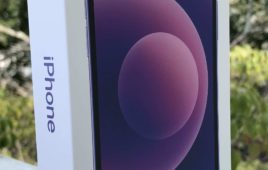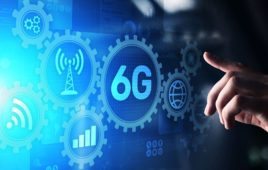U.S. Cellular’s earnings this morning got me thinking about the company’s role in the country’s wireless market. The operator seems stuck in an awkward spot, too small to be a national provider, but too large make its bread and butter from tiny rural markets where it won’t face much competition from the likes of AT&T and Verizon Wireless.
What is U.S. Cellular’s brand identity, and why should customers pick it over a larger provider?
At a time when many consumers are looking for high-end smartphones on speedy 4G networks, U.S. Cellular is trying to draw in subscribers with pledges of better customer service. Its latest Hello Better marketing campaign is clever, but won’t do much to bring in customers who want the iPhone – a device that U.S. Cellular eschewed for being too pricey.
Customer service has been a recurring theme in the company’s advertising, but it has an unproven track record for retaining subscribers: while U.S. Cellular’s Belief plans caught on with some subscribers, they weren’t enough to reverse the downward trend in its customer base.
Its subscriber base has been shrinking for the past two years, posting net losses of its retail customers every quarter beginning around July 2010.
To be fair, U.S. Cellular is trying to keep pace with the big guys with its new LTE network. But its 4G footprint lags behind that of its national competitors, whether in the form of Verizon’s LTE service, Sprint’s WiMAX product or the HSPA+ services touted by AT&T and T-Mobile USA. Even so, the company said today it plans to migrate customers over to LTE more aggressively than it has in the past, freeing up capacity on its 3G network.
Making that LTE network nationwide through roaming agreements could be difficult, if not impossible, in the near term because of technical incompatibilities between U.S. Cellular’s band 12 licenses and the rest of the 700 MHz band. Those roaming agreements are particularly important to a regional operator like U.S. Cellular, since they determine whether it will be able to offer the truly nationwide LTE service it will likely need as a key differentiator in the not-too-distant future.
U.S. Cellular can’t do much to fix interoperability problems in the 700 MHz band, problems that may be making it more difficult to procure smartphones. Another regional provider with band 12 spectrum, C Spire Wireless, found it so difficult to get LTE handsets compatible with its licenses that it gave up on using its 700 MHz spectrum for the service in the near term, and instead reused spectrum from its 3G network.
U.S. Cellular has come out with just four LTE devices since it made its service commercially available in March. Contrast that with Verizon, which unveiled 10 LTE devices at CES in 2011 shortly after launching the network the previous month. It might not seem fair to compare Verizon’s LTE device lineup with U.S. Cellular’s, given the size difference between the two operators, but I think the comparison is apt: it’s not as if consumers take the companies’ subscriber bases into account when choosing which to pick for wireless service.
Then there’s U.S. Cellular’s dabbling in the prepaid space. While its foray with Walmart on no-contract U Prepaid brand helped generate its only source of net customer growth last quarter, it’s a marked departure from the days when it bragged about the high value of its postpaid subscribers. How does U.S. Cellular plan to reconcile its high-quality postpaid service with what consumers expect from an offering sold at Walmart?
U.S. Cellular may be able to compete effectively on quality of service against prepaid providers like Cricket and MetroPCS, but its profits on those no-contract customers will be substantially smaller than its postpaid subscribers.
My point is this: U.S. Cellular has been losing customers because it appears unable to compete effectively with national rivals or maintain its appeal to the local users it has long depended on. The trend was evidenced in its earnings today, when its market penetration declined two-tenths of a percentage point over last year.
It’s not that U.S. Cellular doesn’t provide real value in its core markets. I think back to when I lived in Madison, Wis., a U.S. Cellular stronghold. The company seemed to have the best network around, even providing four-bar service in the underground parking lot of my old apartment building.
But at a time when smartphone is king, it seems that U.S. Cellular’s commitment to network quality and customer service are going unnoticed by subscribers, as evidenced by their continued defections to national providers and cost-competitive prepaid providers.
The numbers don’t lie. U.S. Cellular’s customer base has shrunk by 5 percent over the past two years. Turning that around will require U.S. Cellular to prove its value to consumers.




